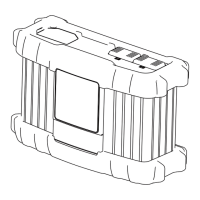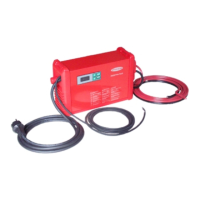Protecting your-
self and others
While the charger is in operation, keep all persons, especially children, out of the
working area. If, however, there are people in the vicinity,
-
warn them about all the dangers (hazardous acids and gases, danger from
mains and charging current, etc.),
-
provide suitable protective equipment.
Before leaving the work area, ensure that people or property cannot come to any
harm in your absence.
Safety measures
in normal opera-
tion
Chargers with a ground conductor must only be operated on a mains supply with
a ground conductor and a socket with a ground conductor contact. If the charger
is operated on a mains supply without a ground conductor or in a socket without
a ground conductor contact, this will be deemed gross negligence. The manufac-
turer shall not be held liable for any damage arising from such usage.
Only operate the charger in accordance with the degree of protection shown on
the rating plate.
Under no circumstances operate the charger if there is any evidence of damage.
Arrange for the mains cable to be checked regularly by a qualified electrician to
ensure the ground conductor is functioning properly.
Any safety devices and parts that are not functioning properly or are in imperfect
condition must be repaired by a qualified technician before switching on the
charger.
Never bypass or disable protection devices.
After installation, an accessible mains plug is required.
EMC device clas-
sifications
Devices with emission class A:
-
Are only designed for use in an industrial setting.
-
Can cause conducted and emitted interference in other areas.
Devices with emission class B:
-
Satisfy the emissions criteria for residential and industrial areas. This also
applies to residential areas in which power is supplied from the public low-
voltage grid.
EMC device classification according to the rating plate or the technical data.
EMC measures In certain cases, even though a device complies with the standard limit values for
emissions, it may affect the application area for which it was designed (e.g. when
there is sensitive equipment at the same location, or if the site where the device
is installed is close to either radio or television receivers).
If this is the case, then the operating company is obliged to take appropriate ac-
tion to rectify the situation.
Data protection The user is responsible for the safekeeping of any changes made to the factory
settings. The manufacturer accepts no liability for any deleted personal settings.
8

